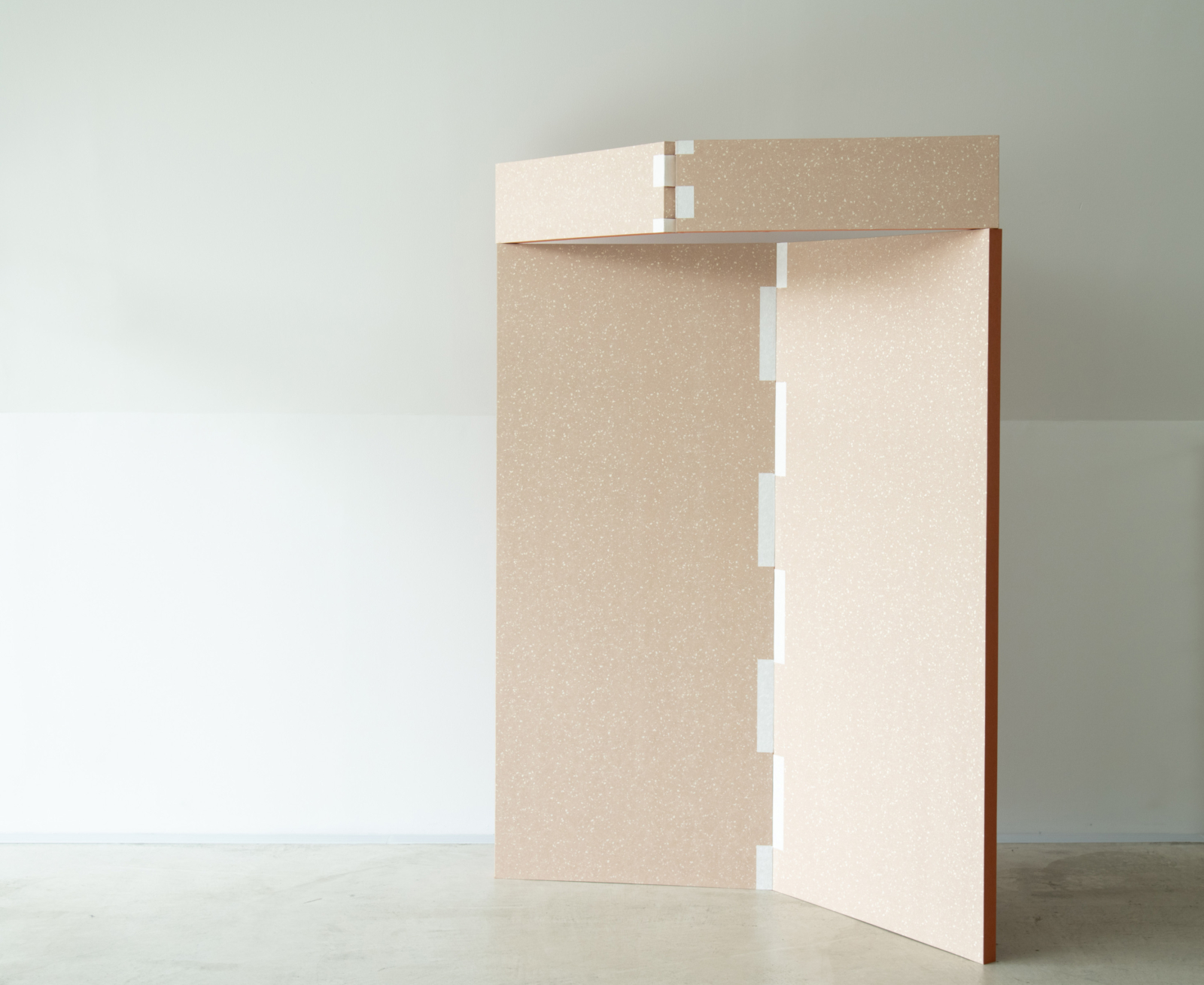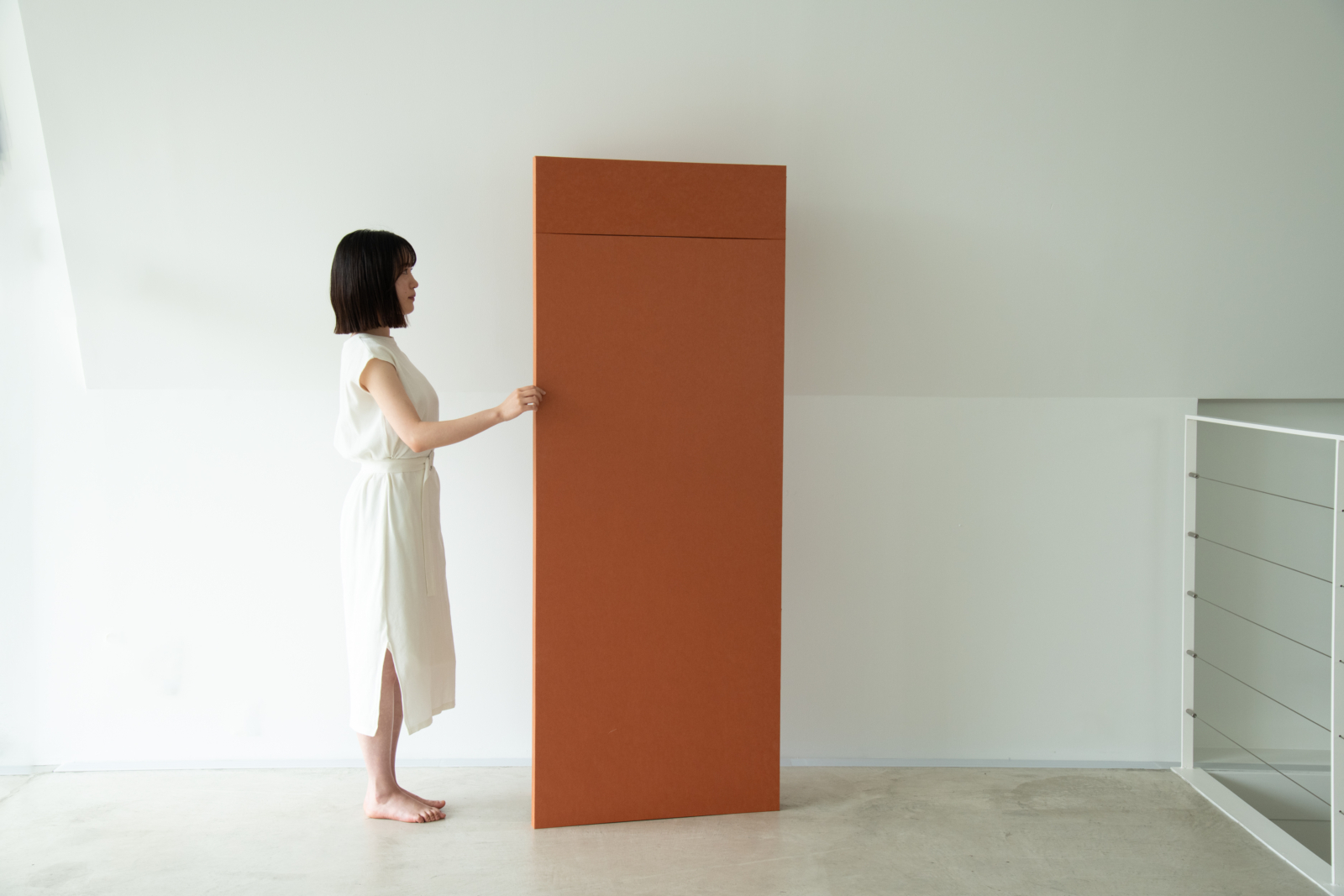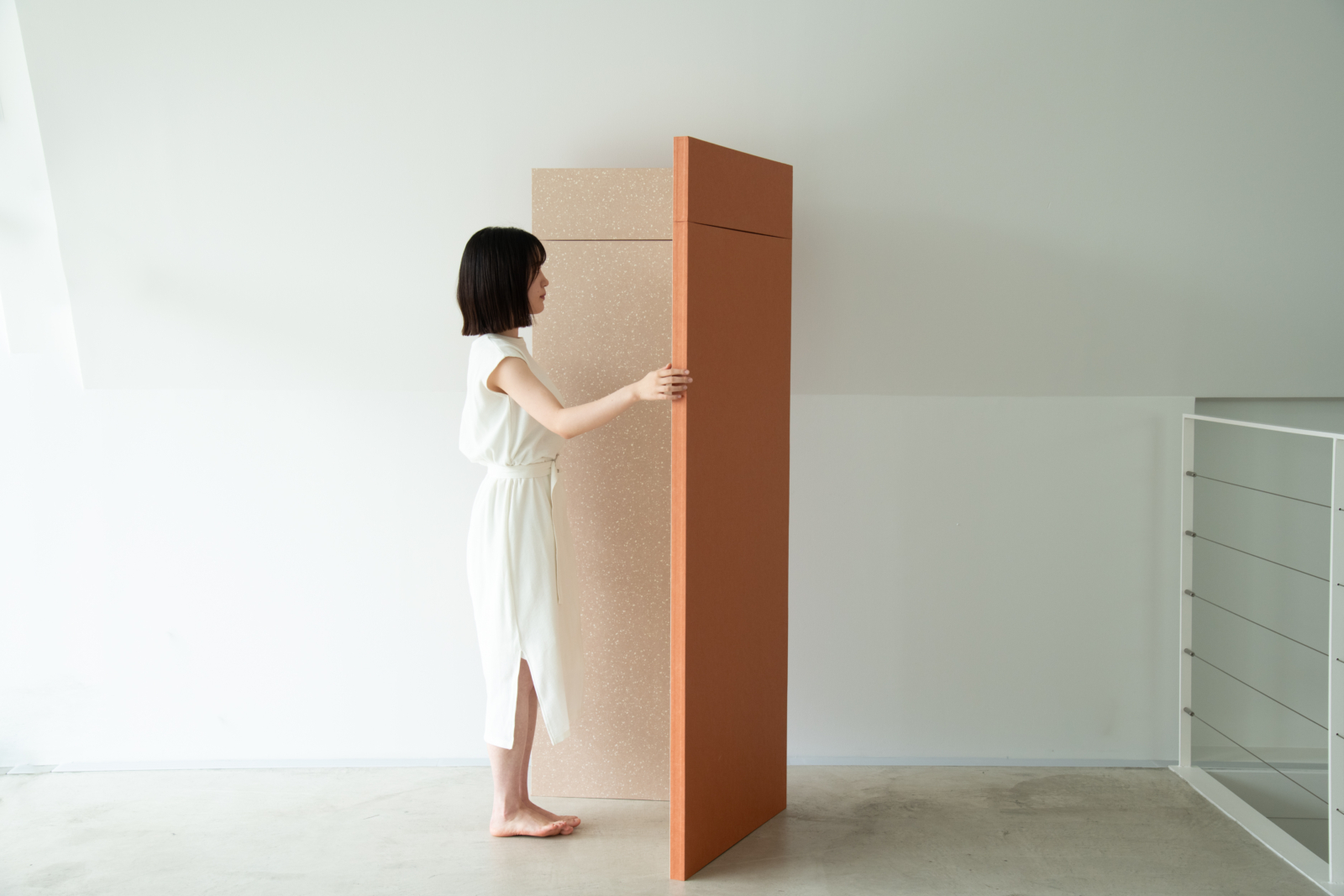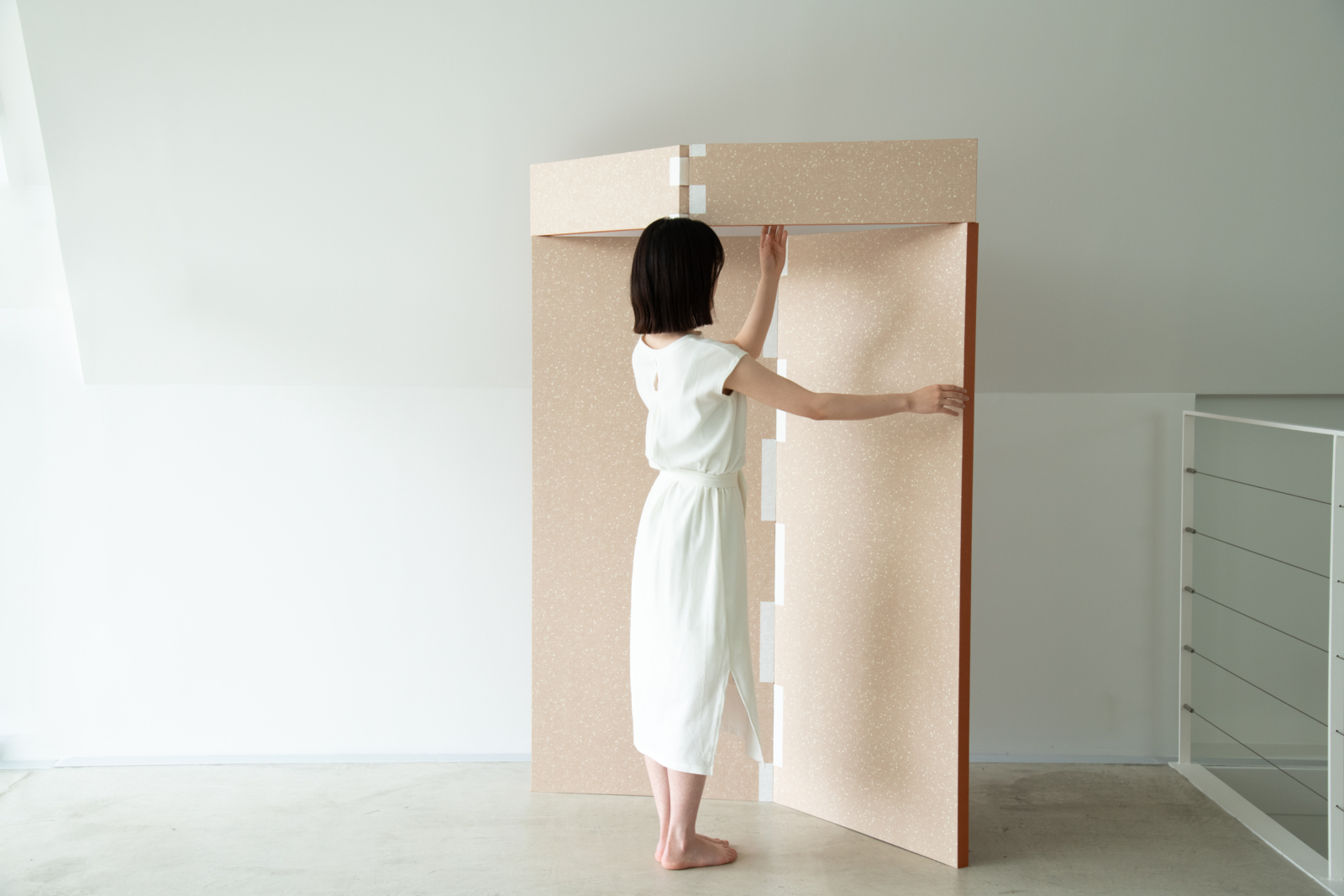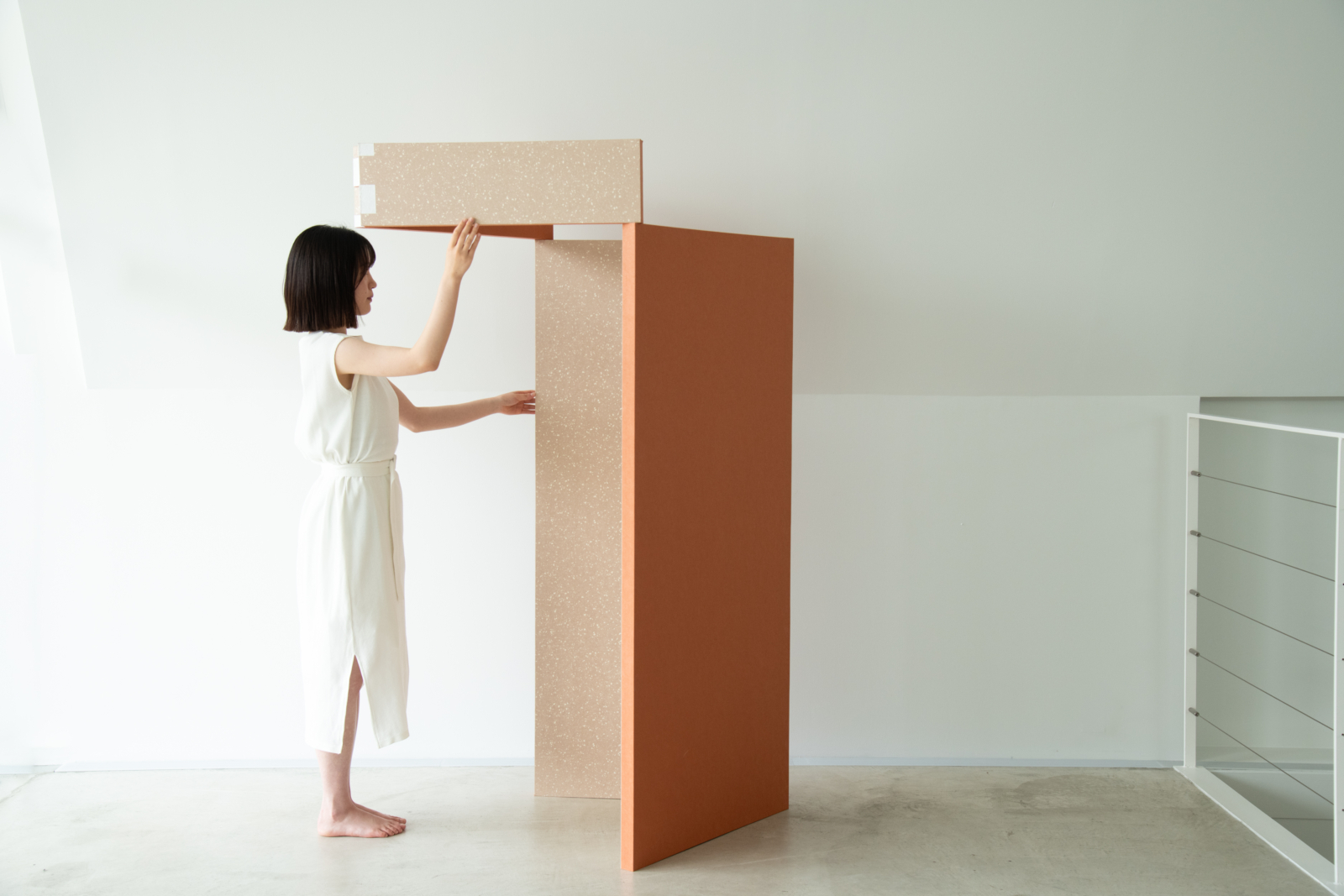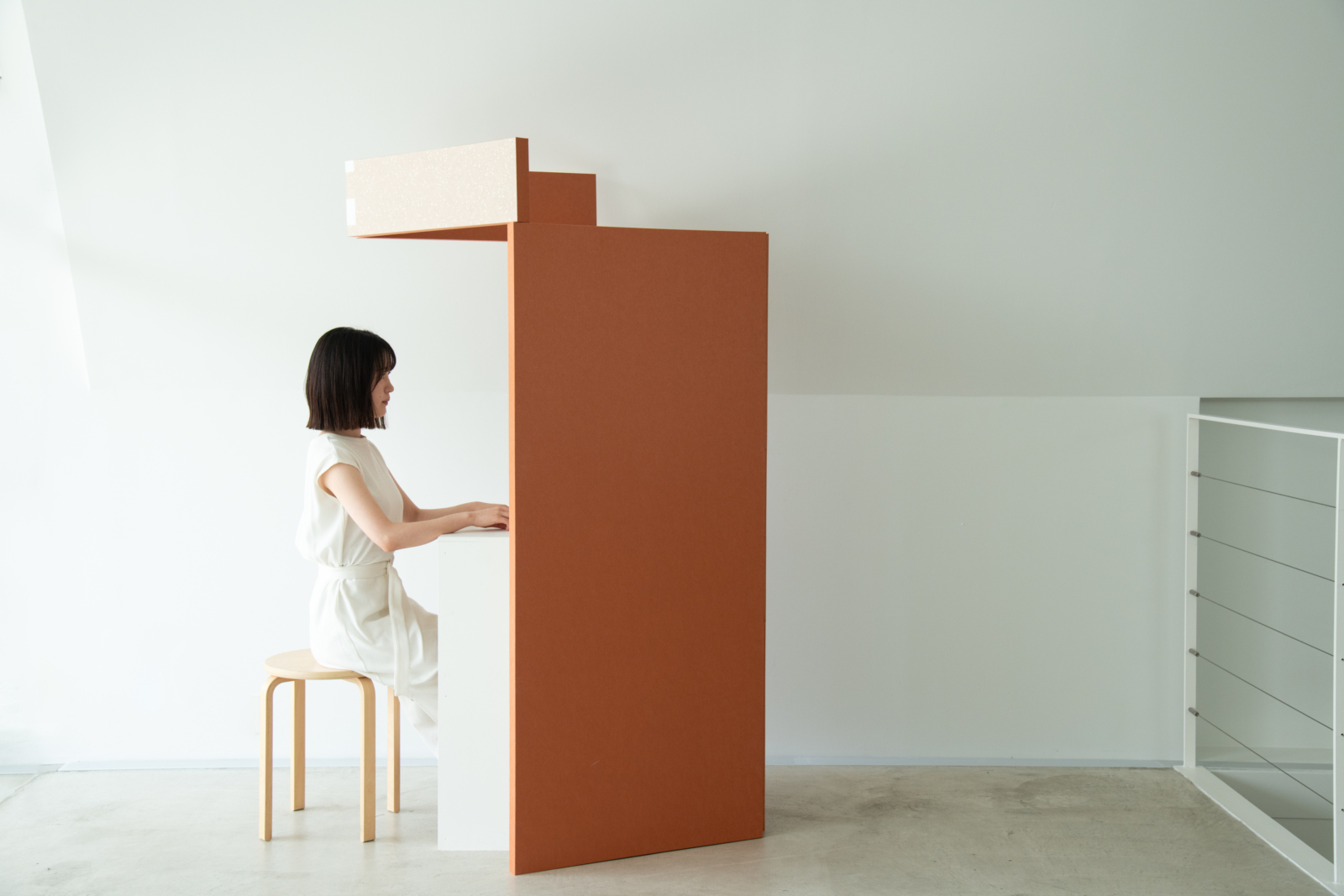The folding screen origin in China about 1,300 years ago, and later evolved in Japan to have hinges made of Japanese paper instead of metal.
Washi hinges, which do not allow even the slightest wind or light to pass through, take advantage of the characteristics of the extremely thin yet strong washi material. It is the result of the wisdom of the Japanese people.
This technique has been passed down from generation to generation at Kataoka Byoubu, the only store in Tokyo that specializes in folding screens. Kaori Akiyama of STUDIO BYCOLOR has used this delicate and clever mechanism to reinterpret the beauty of folding screens in a new way.
This is a form of exploration by Kataoka Byoubu and STUDIO BYCOLOR for a folding screen that is different from those that exist quietly as a background for dolls and flowers, and from those that are used for folding screen paintings in traditional crafts.
Photo Shima Koyama Model Ichika Sotodate
